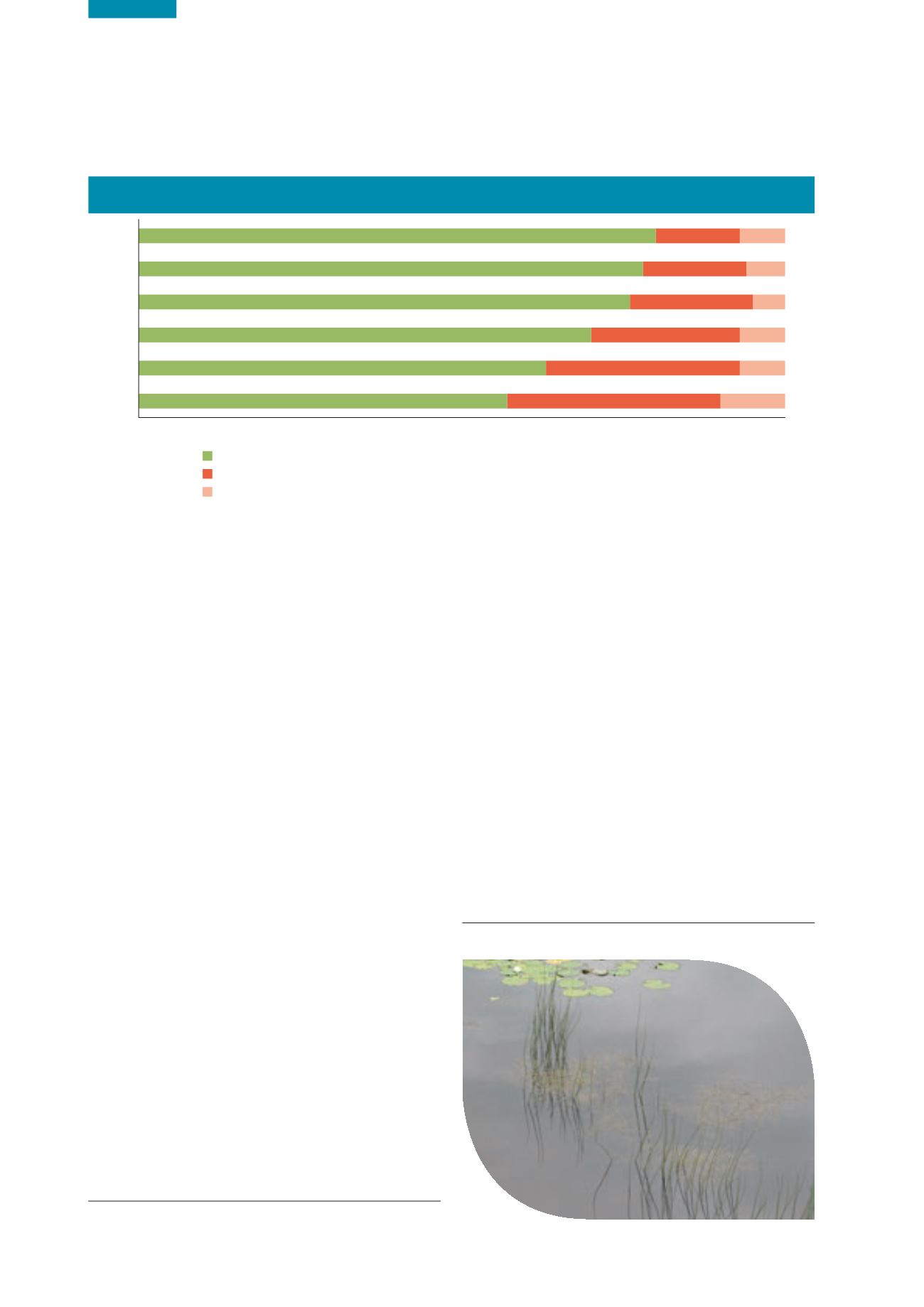

Ireland’s Environment – An Assessment 2016
80
requirements under water-related EU directives and
national policies. The EPA has funded over 100 research
projects with a total commitment of approximately
€20 million for 2007‑2015 under its Water Research Pillar,
which covers groundwater, surface water, and transitional
and coastal water, as well as waste water, drinking water,
bathing water and shellfish waters.
Ireland is funding emerging policy and implementation
research in relation to the WFD, as well as marine research,
to support the formulation and implementation of policies.
More details are available online on the EPA website.
18
Key Achievements
n
Novel methodologies have been developed for the
characterisation of water bodies in accordance with
the WFD and determination of reference baseline
conditions.
n
Ireland’s Ocean Noise Register and the related
monitoring protocol have been established.
n
Scientific data have been provided to support
appropriate measures or actions for use in the
implementation of national policy for reducing
phosphorus and nitrogen losses to waters from
agricultural sources.
n
A state-of-the-art experimental waste water treatment
plant at Tuam, Co. Galway, has been established
through EPA funding with the co-operation of the
National University of Ireland, Galway and Galway
County Council. The facility is advancing the
development of environmental protection measures
nationally and facilitating the testing of novel
technologies and practice-based training and education.
18
www.epa.ie/researchandeducation/research/researchpillars/water/n
Increased knowledge on the transport and attenuation
of pollutants through the landscape (PATHWAYS
project) has led to the development of Catchment
Support Management Tools (CSMTs), which are now
informing the second cycle of WFD characterisation
of water bodies and the tailoring of appropriate
programmes of measures.
n
A national Water Research Coordination Group has
been established, with the aim of enhancing synergies
and collaboration with other national funders and
avoiding duplication.
n
An output from this inter-agency collaboration is
the DROPLET interactive interface, which provides a
database of water-related research funded nationally
(i.e. covering awards from other agencies).
n
The EPA co-chairs the prestigious EU Joint Programme
Initiative on Water “Challenges for a Changing World”
and has been successful in three project applications
with our European partners in the past 3 years.
19
19
www.waterjpi.euFigure 5.13
Compliance of 174 Large Urban Areas with BOD, COD and TSS (Source: EPA)
% of urban areas that failed to meet the effluent quality and sampling standards due to lack of secondary treatment
% of urban areas that failed to meet the effluent quality and sampling standards (but had secondary treatment)
% of urban areas that met the effluent quality and sampling standards
2009
2010
2011
2012
2013
2014
0%
20%
40%
60%
80%
100%
80%
13%
7%
78%
16%
6%
76%
19%
5%
70%
23%
7%
63%
30%
7%
57%
33%
10%


















